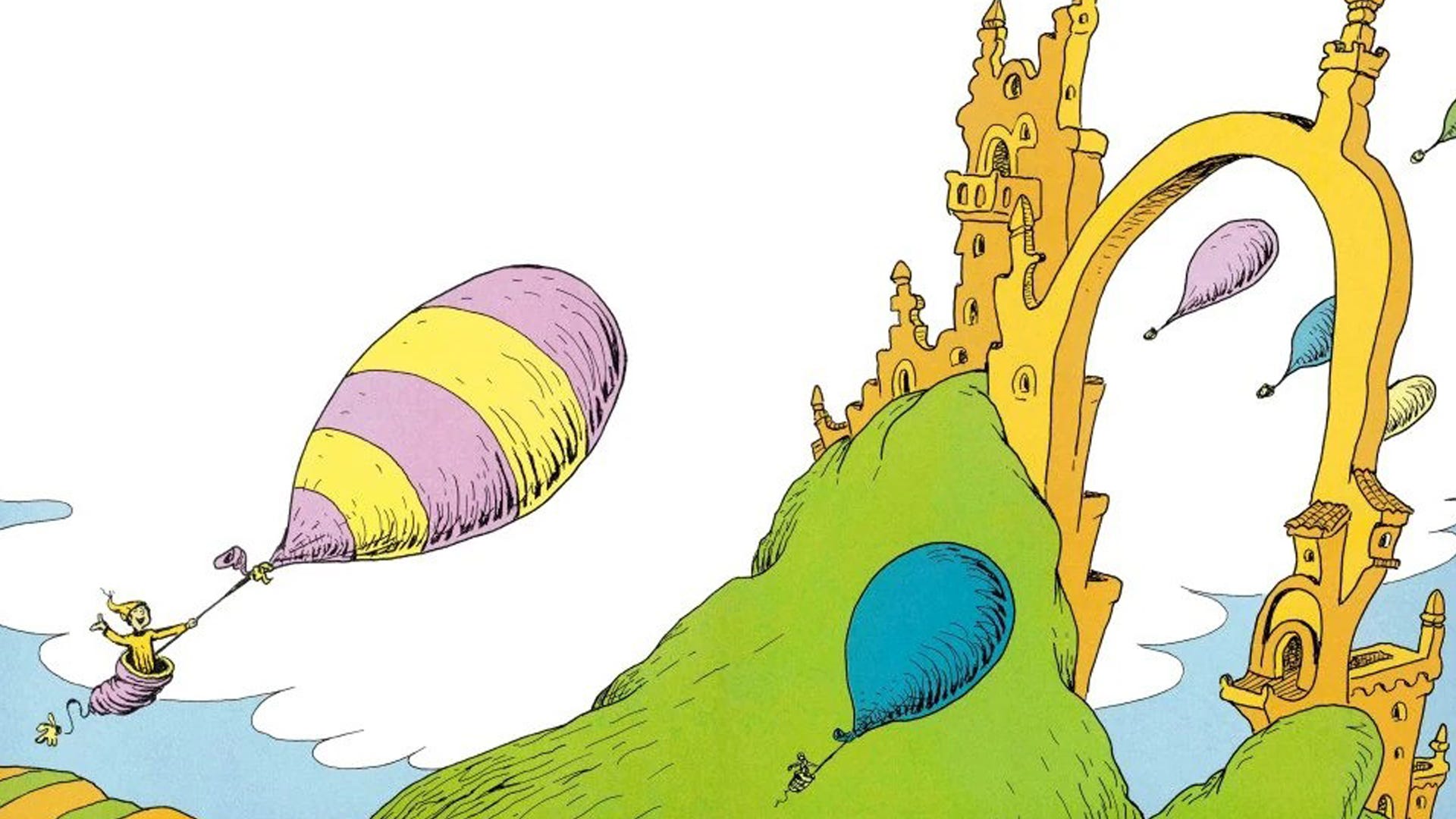What is corruption – and why does it matter so much?
12th January 2023 Taking a small detour for the moment, I thought I would try and look at bit more closely at corruption. How do you define it? What is it? I believe if you are going to defeat something, you first need to understand what it is. Know thine enemy, as they say. I […]
12th January 2023
Taking a small detour for the moment, I thought I would try and look at bit more closely at corruption. How do you define it? What is it? I believe if you are going to defeat something, you first need to understand what it is. Know thine enemy, as they say.
I began by looking up the word corruption in a dictionary, which defined it thus:
Corruption: ‘dishonest or fraudulent conduct by those in power, typically involving bribery.’
However, that is not really what I think of, when I think of corruption. An occasional trip to the theatre, or nice meal in a restaurant from time to time. Whilst imperfect, actions like this are not enough to constitute a major problem.
Corruption, to me, is when the entire system is taken over. Where almost everyone either takes part, or instead chooses to remain silent. At which point no actions can be trusted.
This is the situation that developed within FIFA (Fédération internationale de football association meaning International Association Football Federation) under Sepp Blatter’s leadership. Where hosting the football World Cup became an exercise in bribery from which no-one, and nothing, was immune.
Any man, or woman, who refused to take a bribe from FIFA was the exception, not the rule. Envelopes stuffed with cash were handed out in hotel rooms. At which point we had a completely corrupt organisation. Which is bad enough, on a relatively small scale, in an organisation that deals only with football.
On a larger scale, what happens when corruption affects everything? According to a global corruption index, the worst five countries in the world for corruption are:
- Syria
- North Korea
- Congo, Dem. Rep
- Yemen
- South Sudan
The lowest five ‘risk’ countries for corruption are – starting with the best:
- Norway
- Finland
- Sweden
- Denmark
- Estonia
It is no coincidence that the quality of life, and the wealth and happiness of people in these countries, indeed every country in the world, is closely tied to how corrupt those countries are. Indeed, the association between corruption, and quality of life, moves virtually in lock-stop.
Which means that corruption represents one of the gravest problems humanity faces. The worse it becomes, the more everything else falls apart. Given time, it eventually eats out the very structures that allowed it to exist in the first place. See under “The Roman Empire”.
Moving onto the bribery part of corruption. I also believe that bribery is about far more than just money. Whilst money represents the most obvious way to ‘bribe’ people. there is also power.
I quote you, Frank Underwood, the main fictional character in House of Cards.
‘Such a waste of talent. He chose money over power. Money is the Mc-mansion in Sarasota that starts falling apart after 10 years. Power is the old stone building that stands for centuries. I cannot respect someone who doesn’t see the difference.’
Then there is status. To stand tallest amongst your peers.
‘A good reputation is more valuable than money.’ Publilius Syros.
Nelson Mandela was uninterested in money, but at one time he was probably the most influential and highest status man in the world. Not, I hasten to add, that I think Nelson Mandela was in any way corrupt. But had he chosen to be …
Whilst it is difficult to define corruption perfectly, I would try to define it as … people doing things that are ‘paid’ for by others. Those who are paid gain what they greatly desire. Status, reputation, authority, power – all the same sort of thing, but not quite. And, of course, money. Those paying also gain what they want – usually more money.
For a system to be considered ‘corrupt’ a large number of those within it must take part. Those not actively taking bribes are also complicit, in that they have chosen to do nothing about it. They put up and/or they shut up. Worst of all, I think, is when they try to excuse it.
Money
Sticking to money for the moment and directing the discussion more specifically to the medical world. There was a time when the pharmaceutical industry was happy to pay doctors, and researchers, directly. Straight into the old bank account. No questions asked. Kerrching!
We would like you to give a lecture. Ten grand…kerrching! We want you to chair a think tank on the use of drugs in rheumatoid arthritis. Twenty grand … kerrching! We would like you to act as a consultant over the next two years in order to assist in our drug development programme. Fifty grand a year … kerrching! Run a clinical trial (put your name up as one of the main authors anyway). Don’t worry, you won’t actually have to write anything – or probably even read it. Two hundred grand … kerrching!
Or, taking a real-world example, let us have a look at Oxford Professor Sir Richard Doll. This is the man who, along with Bradford Hill, proved that smoking causes lung cancer. He is a hero to many within the medical profession.
As it turns out he was also paid $1,500 a day, for twenty years, by Monsanto. Which is a total of eleven million dollars. Kerrching!
At one point the Chemical Manufacturers Association, along with Dow Chemicals and ICI, dropped £15K into his bank account. This was for a review which cleared vinyl chloride of causing cancer – of any kind. This review was then used to defend the use of this chemical – now well recognised to be a cancer-causing agent – for over a decade.1
In addition:
‘While he was being paid by Monsanto, Sir Richard wrote to a royal Australian commission investigating the potential cancer-causing properties of Agent Orange, made by Monsanto and used by the US in the Vietnam war. Sir Richard said there was no evidence that the chemical caused cancer.’
How does that make you feel? I have to say I was disappointed, to say the least. Up until this revelation I thought he was one of the good guys. A benevolent, Nelson Mandela-like figure:
However, following these revelations, he was not criticised. Instead, he was robustly defended – which I take as a key signal that corruption has taken over the system:
‘Professor John Toy, medical director of Cancer Research UK, which funded much of Sir Richard’s work, said times had changed and the accusations must be put into context. “Richard Doll’s lifelong service to public health has saved millions of lives. His pioneering work demonstrated the link between smoking and lung cancer and paved the way towards current efforts to reduce tobacco’s death toll,” he said. “In the days he was publishing it was not automatic for potential conflicts of interest to be declared in scientific papers.’
It might not have been automatic to declare conflicts of interest Professor Toy. But that does not make it right. If you are paid tens of millions by the industry, you are no longer a disinterested scientist, and you cannot pretend otherwise. It was wrong at the time, just as it is now, as it always will be. [Nowadays conflicts of interest are far more carefully hidden away].
There were other defenders, from Oxford University.
‘Yesterday, Sir Richard Peto, the Oxford-based epidemiologist who worked closely with him, said the allegations came from those who wanted to damage Sir Richard’s reputation for their own reasons. Sir Richard had always been open about his links with industry and gave all his fees to Green College, Oxford, the postgraduate institution he founded, he said.’
This statement was from the same article which began with these words
‘A world-famous British scientist failed to disclose that he held a paid consultancy with a chemical company for more than 20 years while investigating cancer risks in the industry.’
So it seems, Sir Richard Peto, that Sir Richard Doll was not open about his links with industry. Not in the slightest. No-one in the wider world had the faintest idea. Did those in Oxford University really know? If so, did they actually condone his work on Vinyl Chloride and Agent Orange? They certainly did not breathe a word of criticism.
Instead, we get … ‘the allegations came from those who wanted to damage Sir Richard’s eruption for their own reasons.’ In short, it is those making the allegations who are the bad guys. See under … children accusing priests of sexual abuse in the early days. ‘How dare evil children accuse these noble men of such things?’ Such things that they actually did, you mean.
And what reason could anyone have for damaging the reputation of man who was already dead, with these terrible ‘allegations?’ None was given, because there are no such reasons. Also, these were not ‘allegations’, they were facts. What should they have done, kept their mouths shut?
No, here is what those who worked with Sir Richard Doll should have said, or something very like it.
‘Sir Richard Doll did highly important work in proving that cigarettes cause lung cancer. Work that has benefitted hundreds of millions. However, he took large sums of money from commercial companies and then wrote papers in support of those companies, which resulted in a great deal of harm. We cannot condone these actions. This has seriously damaged his reputation, as it should. We will work to ensure that this type of situation never happens again.’
However, it seems that if you are seen as a ‘great’ person, who has done great work, you cannot possibly be accused of corruption. Even if the evidence is laid out before us all, in black and white.
Perhaps you think I am being rather harsh here. Focussing my attack on one ‘great’ man, now dead. In truth, I picked on this case for a couple of reasons. First, I want to make it clear that corruption is not a new thing in medical research – although it has greatly worsened – and gone undercover. Second, I hope to make it clear that those with a reputation for doing ‘great work’ are just as likely to be corrupt as anyone else.
In truth, they are the most likely to be corrupt. How so? Because they have achieved such high status that they have risen beyond suspicion. In addition, the ‘great ones’ have made themselves immensely valuable. Which means that they are actively sought out. They have both status, and influence.
Authority = power = influence
Influence  money.
money.
Influence is the currency here. And currency is very easily converted into money, and back again. If you can find the most influential ‘great person’ or ‘great institution’ or great ‘great medical journal.’ You pay them the money, and you get the influence you desire.
‘Sir Richard Doll himself says that vinyl chloride is perfectly safe, and how dare you argue with him – you pathetic nobody.’
Or, to quote the industry view on such matters:
‘Key Opinion Leader is regarded as the mastermind in the pharma industry. They’ve put in the time and research to be recognized by their peers as experts in their field. As a result, they have gained a reputation as a thought leader within their specific niche. Their expert opinions and actions can significantly affect the adoption of a new product/brand or the ability to influence consumer purchasing decisions.
Key Opinion Leaders are sort of like the avengers of the clinical research world. They can fill many different roles, and their skill sets are highly sought after by those in the know. A key opinion leader can be critically important in helping to educate physicians about a new drug. They can provide information about the working of drugs, which patient demographics can benefit the most, and what treatment regimens are most effective. KOLs can also offer their unique insights as early adopters of new therapies, which can help to identify and create brand acceptance in healthcare.’2
Nowadays there are entire companies dedicated to nurturing and developing Key Opinion Leaders and helping them work with pharmaceutical industry. Or vice-versa. Here, from the horse’s mouth. An article entitled: ‘KOL management in Pharma and Life Sciences.’
‘As pharmaceutical and life-sciences companies search for the most effective, efficient ways to manage collaboration with the physicians who conduct research, write articles, or speak on their behalf, relationship management of the interaction with these elite physicians, or key opinion leaders (KOLs), has ultimately emerged as an individual business discipline. Similar to CRM, KOL management is an essential component for marketers and medical staff throughout the life-cycle process of a specific drug or product.
By sustaining a business process that creates and maintains meaningful and collaborative relationships between KOLs and business functions from marketing to medical affairs, pharmaceutical and life-sciences companies can experience increased share of voice and accelerated adoptions at the global, national, and regional levels. A CEO of a major pharmaceuticals company recently told a group of analysts that effectively managing KOL relationships was essential to companies’ future products and market expansion.’ 3
Today, almost all of the great people (Key Opinion Leaders), institutions, medical societies and medical journals have been captured by the industry – to a greater or lesser extent. As far back as 2009, the long-time editor of the New England Journal of Medicine wrote these words. Words that I have quoted several times before, but they need almost endless repetition.
‘It is simply no longer possible to believe much of the clinical research that is published, or to rely on the judgment of trusted physicians or authoritative medical guidelines. I take no pleasure in this conclusion, which I reached slowly and reluctantly over my two decades as an editor of The New England Journal of Medicine.’
What happened following this scathing attack? Nothing. Yet these words come from the editor of the most influential (highest impact factor) journal in the World. Someone who spent her entire working life reviewing the quality of medical research, assessing how robust medical guidelines are, and how trustworthy our ‘trusted’ physicians might be.
The answers to those questions being ‘rubbish’, ‘biased’ and ‘corrupt’ in that order.
I have occasionally asked myself: “What would be the worst effect of corruption of medical research”? Well, there are the obvious things. First that we cannot believe a damned thing that is published. With certain provisos – there are honest researchers out there.
Equally bad, or perhaps worse, doctors end up prescribing medicines that do no good, and possibly do harm. Based on biased physicians running biased trials, followed up by biased guidelines, to be published in biased journals.
These are, of course, in themselves terrible things.
But there is something else, which may actually be worse in the long run. If research is directed almost entirely towards ideas that support commercial goals, then this will end up crushing work that dares look in different directions. Try publishing a paper suggesting that cholesterol lowering is a waste of time, when the market for cholesterol lowering drugs is worth hundreds of billions.
Yes, you may be lucky enough to get something into a lower impact journal, but the bigger journals will block you completely. Come up with a different hypothesis as to what actually causes cardiovascular disease, and the big journals will not touch it with a bargepole.
Science only lives, and progresses, when the status quo is regularly attacked, and disrupted. But within a corrupt system, where the majority of funding comes from commercial sources, innovation grinds to a halt. Primarily because new ideas threaten profit. Try stating that Type II diabetes can be reversed with exercise and a low carbohydrate diet, and you are threatening a $200Bn market for diabetes medications. So, good luck with that.
Which leads me to perhaps the most soul-destroying article I have read recently. It was a review of disruptive science. By which the authors meant, the degree to which a scientific paper shakes up the field.
‘The authors reasoned that if a study was highly disruptive, subsequent research would be less likely to cite the study’s references, and instead cite the study itself. Using the citation data from 45 million manuscripts and 3.9 million patents, the researchers calculated a measure of disruptiveness, called the ‘CD index’, in which values ranged from –1 for the least disruptive work to 1 for the most disruptive.
The average CD index declined by more than 90% between 1945 and 2010 for research manuscripts (see ‘Disruptive science dwindles’), and by more than 78% from 1980 to 2010 for patents. Disruptiveness declined in all of the analysed research fields and patent types, even when factoring in potential differences in factors such as citation practices.’
Just have a look at the graph 4:

It is hard to think of a more depressing graph. Looking specifically at life sciences and biomedicine – otherwise known as medical research. It would seem that since the mid-1990s there has been virtually no disruptive science published – at all, anywhere.
The article itself states that ‘disruptive science has declined – and no-one knows why?’
Well, to my mind, there are two possibilities for this decline. The first is that we now know virtually everything across all scientific fields. Therefore, disruptive science has inevitably declined, because there is nothing new to be discovered. We simply know it all.
Of course, this echoes a famous comment by Lord Kelvin at the end of the nineteenth century. ‘There is nothing new to be discovered in physics now. All that remains is more and more precise measurement.’ Ahem, have you come across this chap Einstein by any chance?
The second possibility is that some factor, we shall call it factor K (for corruption) has virtually taken over science, particularly medical science. This factor when combined with money, factor M, has the effect of destroying innovation (I). Thus, squashing disruptive research (DR) flat.
The equation is simple. I ÷ (K x M) = DR
Innovation, divided by (corruption multiplied by money) = Disruption Index.
As the flow of industry money into research has multiplied, innovation and new ideas have shrivelled and died. This, anyway, is my working hypothesis. You may feel there are other reasons. In which case, I would be interested to hear them.
So, yes, I think that corruption is incredibly important. Particularly within the world of science, where mavericks and innovators are absolutely essential. Graphene, for example, an actual major scientific breakthrough. This was discovered by two scientists, Andrei Geim and Kostya Novoselov playing about with pencils and sticky tape in a laboratory in Manchester University.
Playing about in a lab! Research nowadays is driven by funding. Funding is driven by commercial applications. The ‘best’ researchers today know how to bring in money for their labs, and for their universities. Today, researchers need to be productive and drive the income stream. To quote Peter Higgs: ‘I wouldn’t be productive enough for today’s academic system.’
‘Peter Higgs, the British physicist who gave his name to the Higgs boson, believes no university would employ him in today’s academic system because he would not be considered “productive” enough.
The emeritus professor at Edinburgh University, who says he has never sent an email, browsed the internet or even made a mobile phone call, published fewer than 10 papers after his ground-breaking work, which identified the mechanism by which subatomic material acquires mass, was published in 1964.
He doubts a similar breakthrough could be achieved in today’s academic culture, because of the expectations on academics to collaborate and keep churning out papers. He said: “It’s difficult to imagine how I would ever have enough peace and quiet in the present sort of climate to do what I did in 1964.’ 5
‘Collaborate and keep churning out papers.’ This is the Henry T Ford school of research. We need more research! Quantity is what matters. Churning out papers requires money. To get money we have to sell … ourselves.
But innovative research, disruptive research, is not about quantity. It is about quality. One paper on subatomic materials acquiring mass. This is worth an infinite number of papers on how wonderful statins are. But an infinite number of papers on statins is what we now get.
Today, universities sell themselves on their collaboration with industry. Opinion leaders are hugely valuable to the industry, and therefore to their universities. They cannot afford to consider doing research which threatens the flow of money. So, they don’t.
This has become the medical research world that we live in today. It is no longer innovative, disruptive, or challenging. It is almost entirely bought and paid for. It has become Zombie Science. To quote Bruce Charlton, once again, from his paper. ‘Zombie science: a sinister consequence of evaluating scientific theories purely on the basis of enlightened self-interest.’
In the real world it looks more like most scientists are quite willing to pursue wrong ideas for so long as they are rewarded with a better chance of achieving more grants, publications and status. The classic account has it that bogus theories should readily be demolished by sceptical (or jealous) competitor scientists. However, in practice even the most conclusive ‘hatchet jobs’ may fail to kill, or even weaken, phoney hypotheses when they are backed-up with sufficient economic muscle in the form of lavish and sustained funding. And when a branch of science based on phoney theories serves a useful but non-scientific purpose, it may be kept-going indefinitely by continuous transfusions of cash from those whose interests it serves.’ 6
When the journal Nature notes that disruptive science has declined, and no-one knows why … I think this is utter balls. There are plenty of people who know why. The journal Nature also probably knows why. However, if they were to say why, it would open the door to something so big and ugly that no-one wants to even look at it, let alone deal with it.
Better to keep that door firmly shut. That door to the Zombie room. The place where undead science roams. Where innovation, disruption and science itself … died. In the end corruption consumes the host.
1: https://www.theguardian.com/science/2006/dec/08/smoking.frontpagenews
2: https://viseven.com/key-opinion-leaders-in-pharma/
3: KOL Management in Pharma and Life Sciences (destinationcrm.com)
4: ‘Disruptive’ science has declined — and no one knows why (nature.com)
5: https://www.theguardian.com/science/2013/dec/06/peter-higgs-boson-academic-system






























.png)





















![‘Companion’ Ending Breakdown: Director Drew Hancock Tells All About the Film’s Showdown and Potential Sequel: ‘That’s the Future I Want for [Spoiler]’](https://variety.com/wp-content/uploads/2025/02/MCDCOMP_WB028.jpg?#)
























